From the moment he stepped on to movie screens in 1947, Richard Widmark, was branded a villain thanks to his Oscar nominated performance as a cold blooded killer in Kiss of Death. Throwing an elderly woman in a wheelchair down a flight of stairs can have that kind of effect on one’s career. That coupled with his cackling laugh and tendency to enjoy his sadistic acts confirmed in the minds of movie goers everywhere that this Minnesota born actor was the same off screen.
Of course during the studio era if one was a success in a given type of role you were practically condemned to repeat it over and over unless you could shake off the shackles of typecasting. Thankfully Widmark did just that and settled into a long career of playing both good guys and bad in various genres though he always had a mean streak in him when the role called for it.
My earliest memory of Widmark is most likely his playing opposite John Wayne in The Alamo. Been a fan ever since and thankfully while growing up he was still active in both theatrical films and television projects. An unmistakable presence on camera.
A is for …. Allen Smithee. Widmark is one of a handful of actors who have worked with the fictitious director Allen Smithee. The film in question is 1969’s Death of A Gunfighter. Apparently the film was started under the watch of Robert Totten who primarily toiled is series television before being taken over by Don Siegel who had just worked with Widmark on 68’s Madigan. Neither director ended up with an onscreen credit so it was awarded to Smithee who had little to say in the matter for all too obvious reasons.
B is for …. Bowie.
Widmark made for a fine Jim Bowie opposite Duke’s Davy Crockett in the icon’s pet project, The Alamo, released in 1960. Again this is probably my earliest memory of seeing Widmark in a movie as a child when the movie played on Network TV. No idea if our leading man did Jim Bowie justice in the movie because when you’re a kid you just know what you like, history be damned. Of course there is the Bowie knife that the real life Jim Bowie is known for besides going down in history as a hero at The Alamo in 1836.
C is for …. Comanche Todd. Another character played by Widmark. This time in the exciting frontier tale, The Last Wagon released in 1956. The film was directed by Delmer Daves and cast Widmark as a man looked upon as a vicious outcast by a wagon train but one who may become their saviour by the time the final reel approaches. Starring as Widmark’s leading lady is the beautiful Felicia Farr who appeared in a number of westerns in the late 50’s including Daves’ other 1956 release Jubal. I’m happy to recommend both westerns to one and all.
D is for …. Doris Day.
Nestled between westerns and gangster movies is a rare light comedy for Widmark casting him opposite one of my favorite leading ladies, Doris Day. The film is 1958’s The Tunnel of Love. Doris was just one year away from Pillow Talk that would cement Rock Hudson as her most famous onscreen partner. Tunnel was directed by Gene Kelly and while Widmark won’t be much remembered for his comedy skills I found him to be enjoyable in this definite change of pace adapted from what was a successful Broadway play. Frequent Doris co-star, Gig Young, also stars in the film.
E is for …. Eyepatch.
While it didn’t net him an Oscar as it did the Duke in True Grit, Widmark donned the eyepatch three years prior to his Alamo co-star in a 1966 western titled Alvarez Kelly. It’s a Civil War tale from director Edward Dmytryk that finds Widmark’s Confederate Colonel at odds with the title character played by William Holden. Holden has little interest in the war other than to make money. Decent cast and a heck of a movie poster to accompany it.
F is for …. Ford. With Widmark becoming a staple of the westerns it seemed inevitable that he’d work with the great John Ford even if the films came towards the end of Ford’s career and are not considered as memorable as his earlier output. He first worked with Ford on the very Searcher’s like Two Rode Together alongside James Stewart in 1961 and then starred in Ford’s final western, Cheyenne Autumn, released in 1964.
G is for …. Garden of Evil.
If The Alamo isn’t my earliest memory of Widmark then it has to be this 1954 western that sees him starring along with Gary Cooper and Susan Hayward. It’s an exciting tale of Hayward hiring a group of mercenaries to find her husband who has gone missing deep in Apache territory. With the number of mercenaries dwindling we shouldn’t be surprised if it’s our star trio left at the end attempting to escape the Apache warriors who have them boxed in. The big question is, “who’s going to get the girl?” Really a solid western from director Henry Hathaway.
H is for …. Henry Hathaway. Like Ford, Hathaway directed a number of westerns but also scored hits in the Noir field including Widmark’s debut in Kiss of Death (1947). The pair would work together again in 1949 for Down to The Sea in Ships, The Clarion Call segment in 1952’s O. Henry’s Full House and one final time for the aforementioned Garden of Evil in ’54. Hathaway continued directing into the 1970’s scoring his biggest hits with Duke Wayne. True Grit and The Sons of Katie Elder being prime examples.
I is for …. Ida. In just his third film, Road House, Widmark played opposite Ida Lupino and Cornel Wilde. Released in 1948 it’s also his third consecutive Noir and his third consecutive villain. Widmark owns the Road House in this Jean Negulesco directed effort and has Ida as his popular lounge singer. Widmark figures on claiming her for his own but when she sets her sights on Wilde, Widmark, loses his cool and murder is in the air. A first rate thriller that shouldn’t be overlooked.
J is for …. John Verney.
In a rather surprising change of pace, Widmark, went toe to toe against Christopher Lee in Hammer Film’s To The Devil a Daughter in the year of 1976 as the character John Verney. For me a vastly underrated thriller from the studio that dripped blood in what proved to be their final shocker. In essence he’s been cast in the Peter Cushing role of taking on Lee’s satanic worshiping Priest with the body and soul of Nastassja Kinski being the prize. I felt Widmark totally believable as an author and authority on the Occult who gets caught up in a Satanic ritual after Denholm Elliott calls on his expertise.
K is for …. Kramer. As both a producer and director, Stanley Kramer, would work with Widmark twice. First up in the tremendously powerful Judgement At Nuremberg released in 1961. In that film Widmark played the prosecutor vs. Maximilian Schell’s counsel for the defense. A must see with an incredible cast quarterbacked by Spencer Tracy. Fast forward sixteen years and he’d cast Widmark in a tough gangland film as a handler looking to enlist hitman Gene Hackman to do the “organizations” bidding. No where near as successful as Nuremberg, The Domino Principle, sports a great cast around Hackman and that alone makes it a worthwhile venture.
L is for …. Law. As in The Law and Jake Wade. This 1958 western casts Robert Taylor in the role of Wade who gets caught up with an old gang he used to run with led by Widmark. It’s an uneasy alliance where Widmark holds all the cards and a major grudge against Taylor for past transgressions. I feel a major shootout is headed towards us in the final reel. John Sturges directed this oater and with him involved we can be sure he’s put together a quick tempered supporting cast around our leading men. How about Henry Silva, Robert Middleton and DeForest Kelly.
M is for …. Madigan.
Another of Widmark’s better known titles is this hardened cop flick from director Don Siegel just three years prior to his Dirty Harry. Widmark and Harry Guardino are partnered while Henry Fonda is the Police Commissioner looking for results. Another fine cast surrounds Widmark in this big city police drama. James Whitmore, Inger Stevens, Don Stroud and Susan Clark among them. While I’ve never seen them, Widmark, returned to play Madigan in a total of 6 NBC Mystery Movies during the 1972/73 programming schedule. Considering Widmark worked with Seigel on Madigan and on Death of a Gunfighter, I wonder if he was ever considered for Dirty Harry. Let’s not forget that plenty of veteran names were tossed around over the casting that eventually landed at Eastwood’s feet. Sinatra, Lancaster and Mitchum among them. Just a thought.
N is for …. Noir. Is it because he’s generally a bad guy in Noir films that I don’t think of Widmark when confronted with the leading men of the genre? I mean I usually come up with Mitchum, Ryan, Ladd or O’Brien before even considering Widmark. Maybe that’s because I think of him in westerns first and foremost. His list of Noir efforts where he first came to prominence include Kiss of Death, The Street With No Name, Road House, Night and the City, Panic in the Streets, No Way Out, Don’t Bother to Knock, Pickup On South Street and I’ll even throw in The Trap released in 1959.
O is for …. Once Upon a Texas Train. Released as a made for TV western in 1988 to capitalize on the popularity of Willie Nelson, this enjoyable romp pits two long time rivals against each other. It’s outlaw Willie vs. Texas Ranger Widmark but wisely brings along a cast of faces most classic western fans know and love. How about Chuck Connors, Royal Dano, Gene Evans, Jack Elam, Ken Curtis, Dub Taylor, Kevin McCarthy, Stuart Whitman and to top it off the lovely Angie Dickinson. Directed by western veteran Burt Kennedy it really is worth a look to see this group of polished performers poking fun at themselves in what kind of amounts to an updated version of the Over-The-Hill-Gang.
P is for …. Pickup On South Street.
Released in 1953, this Samuel Fuller thriller is one of Widmark’s best remembered films and a Noir classic. I’d rather let you discover the film for yourself if you’ve never seen it but the set up is he’s a pick pocket who lifts a microfilm and gets involved in a spy ring. Outstanding film with one of cinema’s greatest character actresses, Thelma Ritter, appearing along with Widmark. Most highly recommended.
Q is for …. Quinn. Considering their careers ran parallel for many years it’s rather surprising that Widmark only appeared in just one film with Anthony Quinn. 1959’s western Warlock that also had Henry Fonda above the title making it a star studded affair. Tempers run high between the three leads as Widmark is at odds with the smooth Fonda as a town tamer and his saddle pal, Quinn. Directed by Edward Dmytryk the film was released in 1959 during the height of the western’s popularity. While Widmark and Quinn only made the one film together, Fonda and Widmark appeared together a number of times. The Swarm, Madigan, Rollercoaster and How The West Was Won being the others.
R is for …. Railroad. In 1962’s big scale western How The West Was Won, Widmark, starred opposite George Peppard in “The Railroad” segment. Once again he’s playing it cold yet effective as he’s willing to put success above lives in getting the rail ties laid and the train moving into a new era of civilization against Peppard’s more humane character who will take over the balance of the film’s storyline. The Railroad segment was directed by George Marshall who was one of three men on the project. The others being John Ford and Henry Hathaway.
S is for …. Sidney Poitier.
Widmark and Poitier were long time friends off screen but if you get too caught up in their first film together you’d never believe it. In 1950 the pair starred opposite each other in No Way Out for director Joseph L. Mankiewicz. It was Poitier’s film debut. Rivaling his performance in Kiss of Death, Widmark, plays it nasty as a racially charged villain who blames a young black doctor played by Poitier for the death of his brother. The pair would next team up in 1964’s The Long Ships followed by 65’s The Bedford Incident. Once Sidney drifted away from acting for over a decade he turned to directing and employed his old pal, Widmark, to play a villain in the Gene Wilder-Gilda Radner comedy, Hanky Panky released in 1982.
T is for …. Twilight’s Last Gleaming. Directed by Robert Aldrich, this doomsday thriller starred Burt Lancaster as an ex-military General who gets control of a silo that houses nuclear weapons and unless his demands are not met, he’ll trigger WW3. Widmark plays Lancaster’s opponent and spends much of his time in a split screen set up verbally sparring with Burt. Great flick that I previously featured if you’d like to know more about this star studded affair.
U is for …. Udo. Tommy Udo.
The role that forever stayed with Widmark throughout his stellar career was indeed his first. The cackling hood who throws an elderly lady down a flight of stairs to her death in a wheelchair. Sadism at it’s peak for movie goers in 1947. It’s also the only role for which Widmark was ever recognized by the Academy with an Oscar nomination. He’d lose the statuette to Edmund Gwenn in a role that is the polar opposite of Tommy Udo. Gwenn if you recall played Kris Kringle in Miracle on 34th Street. The role did however land him a Golden Globe Award for the most promising newcomer of the year.
V is for …. Vanished. This represents a TV Movie released in two parts back in 1971. Sadly it’s one of the rare Widmark films/performances I’ve yet to see. For his performance as President Paul Roudebush the actor was Nominated for Best Actor in a Leading Role by the Emmys. From what I gather the film concerns the disappearance of a presidential aide and has a long list of credited actors we’re all sure to recognize. Among them Eleanor Parker, E. G. Marshall, James Farentino, Larry Hagman, Sheree North and even the beloved Betty White.
W is for …. The Way West.
This 1967 western from Andrew V. McLaglen came towards the end of the western’s most viable box office years. Star studded it cast Widmark in the saddle beside western favorites Kirk Douglas and Robert Mitchum. It’s a wagon train story with Kirk leading the way and at odds most every mile with Widmark while Mitchum is employed as the frontier scout. Despite three of my favorite actors I must confess to never being a huge fan of this one even with a long list of character actors making the journey including Jack Elam and Harey Carey Jr. And yes indeed that is Sally Field making the trip in case you’re wondering.
X is for …. the X in Hickox. Yeah I know I’m reaching here but that damned letter X is a hard one to satisfy. Late in his career Widmark would star in director Douglas Hickox’s 1985 thriller Blackout that was released through cable on HBO. Been years since I’ve seen it but if memory serves he played a retired police inspector looking to solve the one case that got away. All of which leads him to the man he suspects of murder, Keith Carradine, who may be plotting another by the time Widmark catches up to him.
Y is for …. Yellow Sky. Directed by William A. Wellman, this first rate western represents Widmark’s first foray into the genre that he’d find much success in over the course of his forty plus year career. Not surprisingly he’s been cast as the villain opposite stand-up leading man, Gregory Peck, who is the best of a bad lot. They’re on the run with a gang of outlaws only to find shelter in a deserted ghost town. It’s here they’ll find an old miner who has a fortune in gold tucked away and his good looking tomboy of a daughter, Anne Baxter. Care to guess who gets the girl and who ends up in the ground?
Z is for …. Zetterling.
In 1955 under Mark Robson’s direction, Widmark, co-starred opposite Mia Zetterling in A Prize of Gold. Born in Sweden, Miss Zetterling, began her career in the early 40’s and once the fifties hit appeared opposite marquee names including Widmark’s, Danny Kaye and Tyrone Power. Years later she starred alongside Anjelica Huston in the popular children’s thriller, The Witches, in 1990. While I haven’t seen any of her directing efforts it should be noted she has a number of credits behind the camera from the 1960’s forward.
Hopefully this brief look at Richard Widmark might encourage some who are not overly familiar with his film roles to seek them out and if I can make one more suggestion, look up the A&E episode of Biography dedicated to the actor. There’s much to learn about him and his early years before turning to a career in movies.
Richard Widmark (1948-2008)
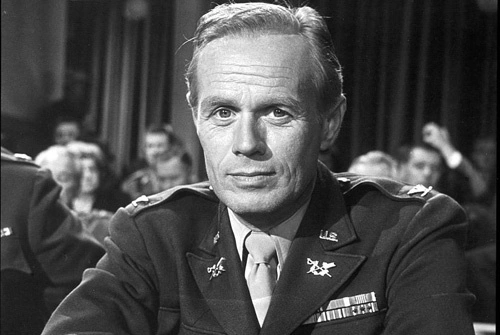
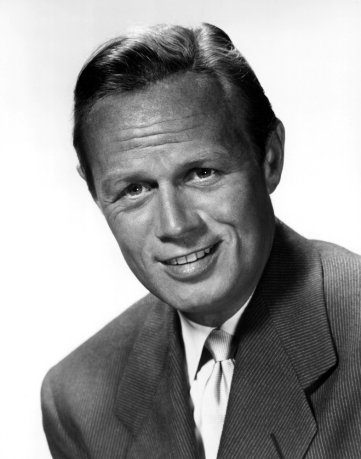
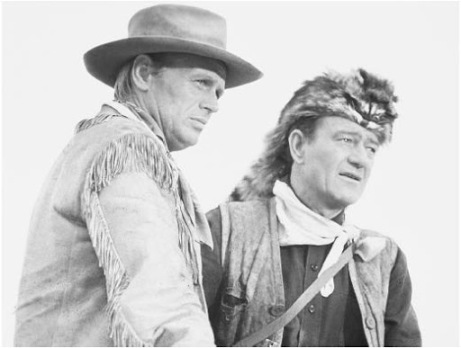
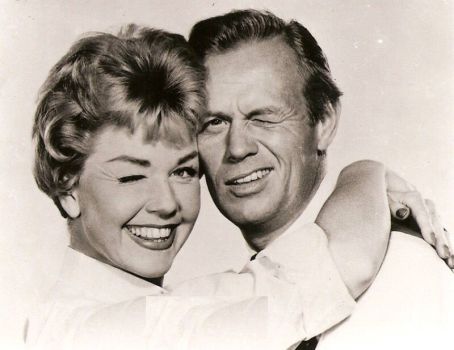
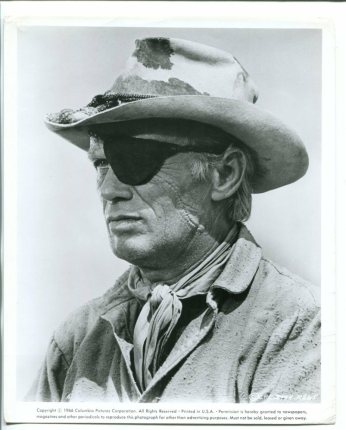
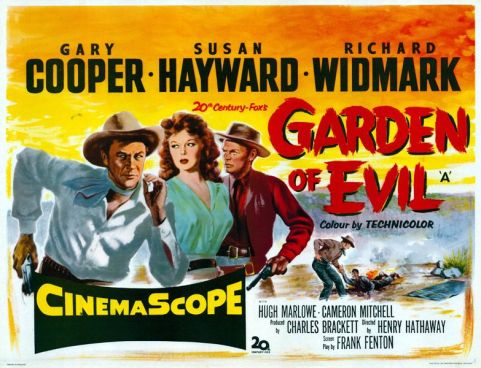

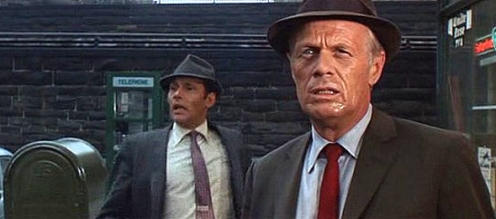

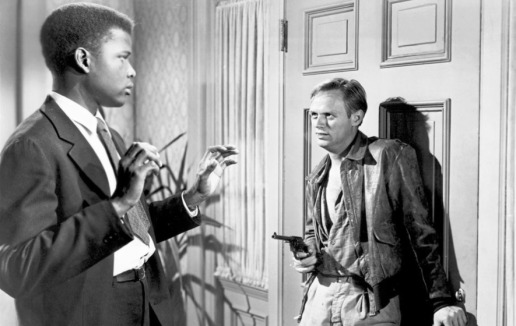
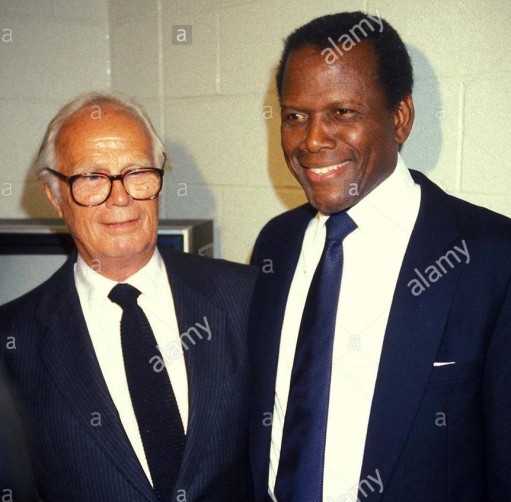
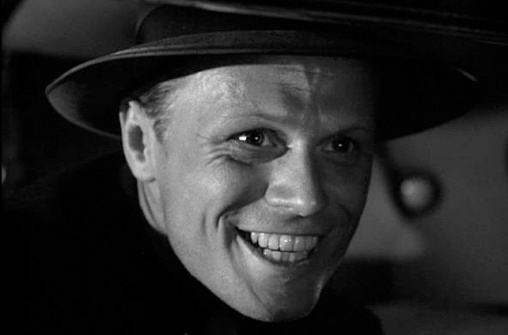
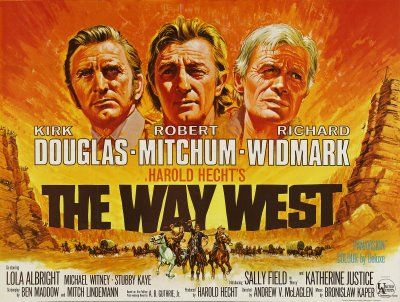
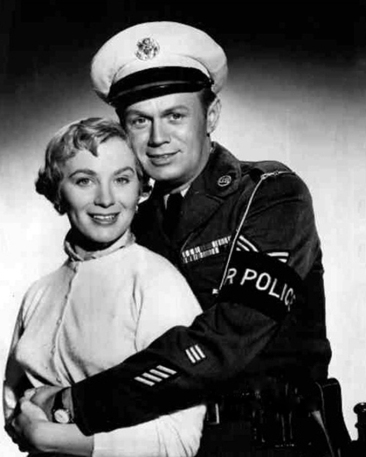

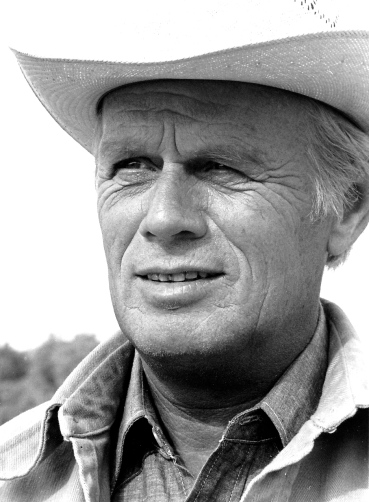
Once again, a work of art. Kudos to you, Mike.
Thanks. Time consuming but always fun to revisit “old friends”.
I thought the “Bedford Incident” was a powerful cold war film. With Martin Balsam as a newly signed on ships physician he quickly locks horns with Widmark.
Young James McArthur also fills out the cast.
Long time since I’ve seen that one. Remember liking it at the time and I’ve always like Balsam’s work.
A fine tribute and well done, covering every letter. So many of my favourite films feature Mr.Widmark – Road House, Yellow Sky, Garden of Evil, The Last Wagon, Pick Up on South Street, Run for the Sun,Warlock
Thanks and that’s a great list of titles. Hours of enjoyment. I just picked up the blu ray release of Warlock so will be looking forward to a long overdue revisit.
A most novel way to form a tribute,I loved this A-Z journey through Mr Widmark’s screen credits. More and more of his films turning up in high definition Universal,Germany will release DEATH OF A GUNFIGHTER on Blu in a couple of weeks,a rather underrated Western I always thought. STREET WITH NO NAME needs a proper restoration and A PRIZE OF GOLD is one of those very hard to find Warwick pictures. I know it’s no great shakes but I’d love to re-visit THE SELLOUT where Mr Widmark is teamed with Oliver Reed.
I have a TCM copy of Prize of Gold at least. I really like The Sellout. Almost shoehorned it in here. And I like Reed so that helps. A good movie and a great one sheet for it as well which I have in my collection. More A-Z coming, trying to stick to one a month. Cheers’
Widmark could do quite a bit, good guys, bad guys, psychopaths, cops, robbers, you name it. Another in the list of the fine versatile actors.
Versatile the key word. Really glad he got to stretch his wings into more varied roles than the crazy villains once the 50’s got moving.
Super tribute, Mike, to a favorite of mine and one of the greatest actors any of us is likely to see.
Thanks. These are time consuming but rather fun to put together and also serve to rekindle my love for key films and pieces of trivia. Widmark always had my eye from a young age when on screen.
I do love me some Richard Widmark. Brilliant actor. Like Robert Ryan, what I love most about him is that he was the polar opposite off-screen to the nasty pieces of work he so often played on screen.
Yes off screen a different fellow. That’s why I recommended that A&E biography show on him. Some real interesting stuff especially before he went to Hollywood including touring and photographing what was going on in Nazi Germany before the war took hold.
As always, a great post, Mike! I’m just now realizing that, not only are these fun to discover which words you choose to use with their corresponding letters, but I’m also learning quite a bit about the actor or actress featured! For example: I never knew that Widmark played his Madigan character in six TV movies…nor did I know that he played a character with the coolest name ever, Comanche TODD! And I agree, Yellow Sky is worth a look, as are his noir films (as a good guy, I really liked him in Panic in the Streets). And I wondered how your X choice was going to play out this time!
So it sounds like y9ou need to see The Last Wagon with that Todd guy in it. Hell of a western. I’d like to see those Madigan flicks…someday??? Bent the X rule a little but as Duke would say … A man’s gotta do what a man’s gotta do.” And besides that Blackout flick from director Hickox was a nifty little thriller.